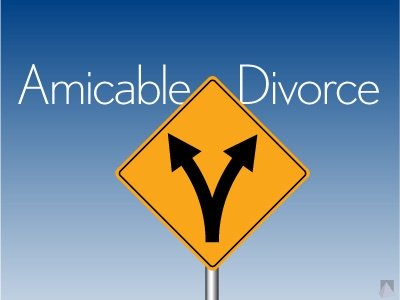Contents:


Liquid Assets- Assets that are kept either in cash or cash equivalents are regarded as liquid assets. These can be converted into cash in a very short period of time; for example, cash, bank, bills receivable, etc. Investors and potential investors- They invest or plan to invest in the business. Hence, in order to assess the viability and prospectus of their investment, creditors need information about profitability and solvency of the business. Banks and other financial institutions- Banks provide finance in form of loans and advances to various businesses.
You must have a strict credit policy where credit should be given to customers with fair credibility. But the court can send a debtor to jail for unpaid debts. Any individual who has declared himself bankrupt is also a debtor. This results in fewer investments for the future. The debtor must be responsible enough to pay debts. He should not make excuses for late repayments.
• The directors/managers use them for making both internal and external comparisons in their attempts to evaluate the performance. They may compare the financial analysis of their company with the industry figures in order to ascertain the company’s strengths and weaknesses. Management is also concerned with ensuring that the money invested in the company/organisation is generating an adequate return and that the company/organisation is able to pay its debts and remain solvent. The term ‘revenue’ means the amount of money that a company enjoys as its profit from selling products or services during a specific time.
- In order to assess whether accounting information is decision useful, it must possess the characteristics of reliability, relevance, understandability and comparability.
- A debtor is a person or an entity that owes money to another, which could be any individual or institution .
- D) might turn the balance over to the state for tax reduction.
- Creditor vs Debtor is an essential part of the said, and they form an important part of the organisation’s liquidity position.
- State the end product of financial accounting.
For example, if you take a loan to buy your house, then you are a distinguish between debtors and creditors class 11 in the sense of borrower, while the bank holding your mortgage is considered to be the creditor. Assists in analysing the expenditure for ascertaining the cost of various products manufactured or services rendered by the firm and fixation of prices thereof. • The creditors want to know if they are likely to get paid and look particularly at liquidity, which is the ability of the company/organisation to pay its debts as they become due.
Additionally, OCs are typically not interested in the company’s revival but are eager for its liquidation. Generally speaking, if you borrow money, then you are a debtor to the loan provider. Every debtor typically has a formal agreement with the creditor (supplier/lender) regarding terms of payment, discount deals, etc. ‘Debtor’ refers not only to a goods and services client but also to someone who borrowed money from a bank or lender.
Tax Saving Investment Made Simple
Financial accounting finds opportunities to represent the company’s economic status to the authority. The concerned authorities can be higher authorities, lenders, banks, dealers, wholesalers, or the masses. Substitute of memory- In the modern world, every business incurs large number of transactions and it is beyond human capability to memorise each and every transaction.
Top Fed Official: Fed Will “Keep At This” Until Your Savings … – The Intercept
Top Fed Official: Fed Will “Keep At This” Until Your Savings ….
Posted: Fri, 04 Nov 2022 07:00:00 GMT [source]
Debtors or ‘receivables’ are customers who owe funds to the company. They have purchased goods on credit and, payments are yet to be made by them. Sundry debtors, also known as ‘sundry receivables’ refer to a company’s customers who rarely make purchases on credit and the amounts they purchase are not significant. For operating any business Creditor and Debtor are very important terms as most businesses run on credit. A business requires to have a great liquidity position.
How Does One Become a Debtor?
Ratios like the Current Ratio and the Quick ratio measure the current liquidity situation is of the organisation. Creditor vs Debtor is an essential part of the said, and they form an important part of the organisation’s liquidity position. A credit policy is made with specific reference to the credit period received or allowed and the amount received or given on credit so the institute can plan properly in advance regarding its credit cycle. It is essential to have a strong and robust credit policy in place, so the business does not get working capital stress. The terms debtor days and creditor days are used to know the average number of days that an organisation lets pass before its debtors pay and the average no of days a company lets give before its lenders are paid, respectively.

In a manufacturing concern, raw materials are https://1investing.in/d, processed further into finished goods and then sold. Purchases may be cash purchases or credit purchases. Payment of rent, salary, purchase of goods, purchase of machinery, purchase of furniture, etc. are examples of expenditure. Refers to a business enterprise, whether for profit or not-for-profit motive. Q.12 “The role of accounting has changed over the period of time”. Long-term lenders want information about the creditworthiness and the ability of the enterprise to pay interest and repayment of their loans.
In order to assess whether accounting information is decision useful, it must possess the characteristics of reliability, relevance, understandability and comparability. An economic event that occurs entirely between the internal wings of an enterprise, e.g., supply of raw material or components by the stores department to the manufacturing department, payment of wages to the employees, etc. To be comparable accounting reports must belong to a common period and use common unit of measurement and format of reporting. Q.2 State the end product of financial accounting. Government- It needs information to determine national income, GDP, industrial growth, etc. The accounting information assist the government in the formulation of various policies measures and to address various economic problems like employment, poverty etc.
For new firms, single entry bookkeeping is ideal. Single entry accounting is also advantageous for businesses with a small number of transactions and simple financial tracking requirements. Using the single entry method is also an excellent way to begin learning how to handle your finances. Inadequate accounting system since it does not record all financial transactions.
SUNDRY DEBTORS AND SUNDRY CREDITORS
The excess of revenues of a period over its related expenses during an accounting year is profit. Profit increases the investment of the owners. Entity means a reality that has a definite individual existence. Business entity means a specifically identifiable business enterprise like Super Bazaar, Hire Jewellers, ITC Limited, etc. An accounting system is always devised for a specific business entity . Limited resources required – Since only cash book and few ledger accounts are recorded in this system, the staff required for support is also smaller as compared to the double-entry system.
A Tale of 4 Cities: How Different Jurisdictions Recently Address … – JD Supra
A Tale of 4 Cities: How Different Jurisdictions Recently Address ….
Posted: Mon, 03 Oct 2022 07:00:00 GMT [source]
These types of customers usually fall victim to unpleasant credit terms and lower service levels. The information, product and services provided on this website are provided on an “as is” and “as available” basis without any warranty or representation, express or implied. Khatabook Blogs are meant purely for educational discussion of financial products and services. Khatabook does not make a guarantee that the service will meet your requirements, or that it will be uninterrupted, timely and secure, and that errors, if any, will be corrected. The material and information contained herein is for general information purposes only.
Class 11 Accounts Chapter 2 Basic Accounting Terms TS Grewal Solutions
Sundry creditors, also known as ‘sundry payables’ refer to a company’s suppliers from whom the company rarely makes purchases on credit and the amounts purchased from them are not significant. Businesses keep an eye on their lenders for a various reasons. Knowing how much a company owes, how much the owed money, and when payments must be made or received lets them know their cash flow. It also ensures that they have enough money in the bank for business payments, such as salaries, rent, and other overhead expenses. In other words, the relationship that a debtor and a creditor share is complementary to that of a customer and supplier share.
Accounting as an information system collects and communicates economic information about an enterprise to a wide variety of interested parties. However, accounting information relates to the past transactions and is quantitative and financial in nature, it does not provide qualitative and non-financial information. These limitations of accounting must be kept in view while making use of the accounting information. 1.5 Liabilities1.5 Liabilities1.5 Liabilities1.5 Liabilities1.5 LiabilitiesLiabilities are obligations or debts that an enterprise has to pay at some time in the future. They represent creditors’ claims on the firm’s assets. Both small and big businesses find it necessary to borrow money at one time or the other, and to purchase goods on credit.
Whether you’re starting from scratch or wanting to upgrade your start-up’s current bookkeeping system, having a proper bookkeeping system is necessary. So, whether you use a single-entry or double-entry bookkeeping system (also known as single-entry or double-entry accounting) it has ramifications for how you handle the rest of your finances. When you choose single-entry bookkeeping instead of double-entry, you limit your company’s growth and hinder yourself from performing critical accounting functions. However, this process is easier for small or medium-size companies than large companies, where double entry bookkeeping is preferred.

It will make no difference in the trail balance. It can be prepared without adjusting the balance in the cash book. Explain the factors, which necessitated systematic accounting. List any five users who have indirect interest in accounting.
Creditor days gives the scope allowed by its suppliers and creditors. It also reflects the value that both organization put on the business conducted and demonstrates the organization’s cash flow and the extent that it’ll go to finance its business with its debt. Generally speaking, if an individual borrow money, then he or she is a debtor to the loan provider. Every borrower typically has a formal agreement with the lender (supplier/creditor) regarding terms of payment, discount deals, etc.
A creditor is a person or institution that extends credit by giving another entity permission to borrow money intended to be repaid in the future. A business that gives supplies or services to a company or individual and does not demand payment in near future is also considered a creditor, based on the fact that the client owes the business money for services already provided. BASIS FOR COMPARISONDEBTORSCREDITORSMeaningDebtors are the parties who owes debt towards the company.Creditors are the parties to whom the company owes a debt.What is it? Dual effect means first effect is debit and second effect is credit. In short, every business transaction is recorded with at least two effects or aspects.
As can be observed, a resolution plan is ineligible for approval under Section 30 read in conjunction with Section 31 unless a minimum payment is given to operational creditors that is not less than liquidation value. Regulation 38 was also changed on October 5th, 2018. It also refers to money or money’s worth lost without receiving any benefit in return, e.g., cash or goods lost by theft or a fire accident, etc. Hence it is regarded as a language of business. Accounting is a process of identifying, measuring, recording the business transactions and communicating thereof the required information to the interested users.
It is not sufficient that the financial information is relevant and reliable at a particular time, in a particular circumstance or for a particular reporting entity. But it is equally important that the users of the general purpose financial reports are able to compare various aspects of an entity over different time period and with other entities. To be comparable, accounting reports must belong to a common period and use common unit of measurement and format of reporting. According to the study, the IBC also addresses circumstances in which a creditor has conducted both financial and operational transactions with an organization. Under these conditions, the creditor may be categorised as a financial creditor for the amount of the financial debt and an operational creditor for the amount of the operational debt. The term ‘debtor’ refers to individuals as well as other firms, banks, lending companies, and more.
NOTICE TO DEBTORS AND CREDITORS Debtors & Creditors … – Gwinnettdailypost.com
NOTICE TO DEBTORS AND CREDITORS Debtors & Creditors ….
Posted: Wed, 25 Jan 2023 05:31:10 GMT [source]
A Rise in expenses/losses is debited, and the drop in expenses/ losses is credited. Before starting the preparation, it is important to go through the detailed Class 11 Accountancy Syllabus, as this will help you know the important topics from the exam of view. The following are some of the important questions that you need to prepare from the introduction of the accounting topic. To ease out your preparation, we have provided chapter-wise Class 11 Accountancy Important Questions and Answers in this post. Solving these sample questions will let you understand the type of questions that can be asked in the exam.
Q) ________ is used to organize the record data into categories. Q) __________ query indicates an individual to access criteria for picking a collection of records. Q) ____________ oriented applications are used in computerized accounting system. The two limitations of a computerized accounting system are. Q) Give two advantages and disadvantages of a computerized accounting system. The two features of a computerized accounting system are.
Just as for debtors, it is not practical to maintain separate ledger accounts for each small-scale infrequent supplier. Thus, these records are maintained collectively in a single account named ‘sundry creditors’. In general, a debtor is a customer who has purchased a good or service and, therefore, owes the payment in return to the provider. Customers or suppliers are called debtors or creditors for accounting purposes.
Vs. Union of India ibclaw.in 03 SC, the Hon. Supreme Court of India was asked to rule on the differential treatment and preference given to “Financial creditors” over “Operational Creditors,” which was contested. Any sum raised through any other transaction, such as a forward sale or purchase agreement, that has the commercial impact of a loan. The amount of any liability related to a lease or hire purchase agreement that is deemed a finance or capital lease under the Indian Accounting Standards or such other accounting standards as may be prescribed.
Some important topics in this chapter are customized accounting software, tailor-made software, readymade accounting software, and computerized accounting system. Q) Write the formula to calculate the cost of goods sold. Salaries – The salaries paid to the employees for administrative purpose.